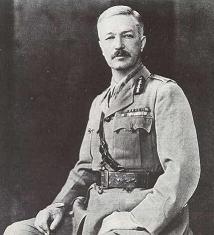
Colonel Reginald Edward Harry Dyer, was a British military officer in the Bengal Army and later the newly constituted British Indian Army. His military career began in the regular British Army, but he soon transferred to the presidency armies of India.

Amritsar, historically also known as Rāmdāspur and colloquially as Ambarsar, is the second-largest city in the Indian state of Punjab, after Ludhiana. Located in the Majha region, it is a major cultural, transportation and economic centre. The city is the administrative headquarters of the Amritsar district. It is situated 217 km (135 mi) north-west of Chandigarh, and 455 km (283 mi) north-west of New Delhi. It is 28 km (17.4 mi) from the India-Pakistan border, and 47 km (29 mi) north-east of Lahore, Pakistan.

The non-cooperation movement was a political campaign launched on 4 September 1920 by Mahatma Gandhi to have Indians revoke their cooperation from the British government, with the aim of persuading them to grant self-governance.

Nanak Singh,, was an Indian poet, songwriter, and novelist of the Punjabi language. His literary works in support of India's independence movement led the British to arrest him. He published novels that won him literary acclaim.
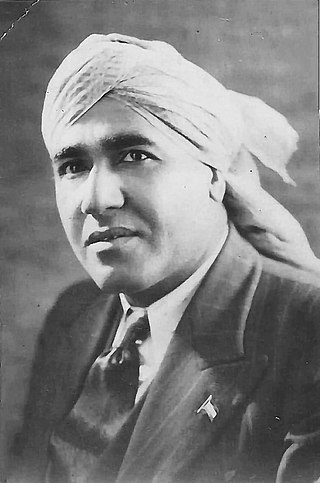
Udham Singh was an Indian revolutionary belonging to Ghadar Party and HSRA, best known for assassinating Michael O'Dwyer, the former lieutenant governor of the Punjab in India, on 13 March 1940. The assassination was done in revenge for the Jallianwala Bagh massacre in Amritsar in 1919, for which O'Dwyer was responsible and of which Singh himself was a survivor. Singh was subsequently tried and convicted of murder and hanged in July 1940. While in custody, he used the name 'Ram Mohammad Singh Azad', which represents the three major religions in India and his anti-colonial sentiment.

Saifuddin Kitchlew was an Indian independence activist, barrister, politician and later a leader of the peace movement. A member of Indian National Congress, he first became Punjab Provincial Congress Committee head and later the General Secretary of the All India Congress Committee in 1924. He is most remembered for the protests in Punjab after the implementation of Rowlatt Act in March 1919, after which on 10 April, he and another leader Satyapal, were secretly sent to Dharamsala. A public protest rally against their arrest and that of Gandhi, on 13 April 1919 at Jallianwala Bagh, Amritsar, led to the infamous Jallianwala Bagh massacre. He was also a founding member of Jamia Millia Islamia. He was awarded the Stalin Peace Prize in 1952.

Sir Michael Francis O'Dwyer was an Irish colonial officer in the Indian Civil Service (ICS) and later the Lieutenant Governor of Punjab, British India, between 1913 and 1919. In his tenure Jallianwala Bagh massacre occurred in which more than 1500 peaceful protesters were killed
Mahilpur is a city and a Nagar Panchayat in Hoshiarpur district in the Indian state Punjab. It is situated on Hoshiarpur to Garhshankar stretch of State Highway 24. It is famous for the game of football in the region. Mahilpur is connected by road to nearby districts, states and towns such as Jaijon, Jalandhar, Pathankot, Mohali, Chandigarh. Mahilpur is a development block. Mahilpur block has 140 villages in it. It as also known as the soccer-town of India given the craze of football among the people of Mahilpur town and its surrounding villages. It belongs to the Sirowal area in the Doaba region of Punjab. Mahilpur had its first bank as Punjab National Bank in 1946 which operates two branches in the city. Mahilpur is famous for mangoes in the region.

The Jallianwala Bagh massacre, also known as the Amritsar massacre, took place on 13 April 1919. A large crowd had gathered at the Jallianwala Bagh in Amritsar, Punjab, British India, during the annual Baishakhi fair to protest against the Rowlatt Act and the arrest of pro-Indian independence activists Saifuddin Kitchlew and Satyapal. In response to the public gathering, the temporary brigadier general R. E. H. Dyer surrounded the people with his Gurkha and Sikh infantry regiments of the British Indian Army. The Jallianwala Bagh could only be exited on one side, as its other three sides were enclosed by buildings. After blocking the exit with his troops, Dyer ordered them to shoot at the crowd, continuing to fire even as the protestors tried to flee. The troops kept on firing until their ammunition was low and they were ordered to stop. Estimates of those killed vary from 379 to 1,500 or more people; over 1,200 others were injured, of whom 192 sustained serious injuries.

Gurmukh Singh Musafir was an Indian politician and Punjabi language writer. He was the 5th Chief Minister of Punjab from 1 November 1966 to 8 March 1967.

Shaheed Uddham Singh is a 1999 Indian Punjabi-language biographical film based on the life of Udham Singh, an Indian revolutionary who had witnessed the 1919 Amritsar massacre and wanted to avenge the mass killing of his countrymen. He was desperate to punish Michael O'Dwyer, the Lieutenant Governor of the Punjab for his involvement with the massacre. The film was theatrically released in India on 24 December 1999, just two days before Singh's birth centenary. The film was screened retrospective on 13 August 2016 at the Independence Day Film Festival jointly presented by the Indian Directorate of Film Festivals and Ministry of Defense, commemorating 70th Indian Independence Day.

Sardar Bahadur Sir Sundar Singh Majithia was a Punjabi landowner and politician.
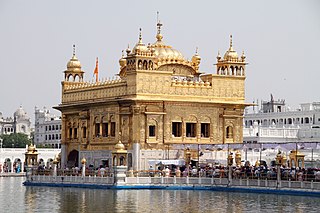
The state of Punjab is renowned for its cuisine, culture and history. Punjab has a vast public transportation and communication network.
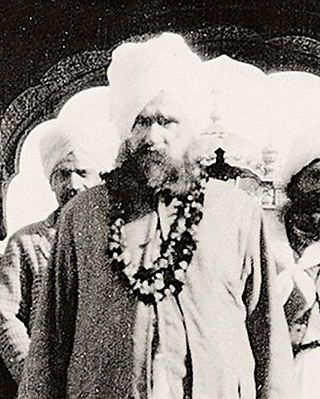
Arur Singh Shergill was a Sikh magistrate and civil judge who served as the manager of Darbar Sahib and the Akal Takht, as a sarbarah appointed by the British Raj from 1907 to 1920.
Amritsar is a city situated in the state of northern Punjab, the northwestern region of India. It is 25 kilometres away from the Pakistan border. This important Punjab city is the main centre of commerce, culture, and transportation. It is the centre of Sikhism and the principal place of worship for Sikhs. Amritsar is attractive destination for tourists, especially those part of Golden Triangle. Major destinations are:
Satyapal was a physician and political leader in Punjab, British India, who was arrested along with Saifuddin Kitchlew on 10 April 1919, three days before the Jallianwala Bagh massacre.
Hans Raj was an Indian youth, in Amritsar, British India, who in June 1919 became an approver for the British government when he gave evidence for the Crown at the Amritsar Conspiracy Case Trial in which he identified his fellow Indian revolutionaries, buying his own freedom in return.
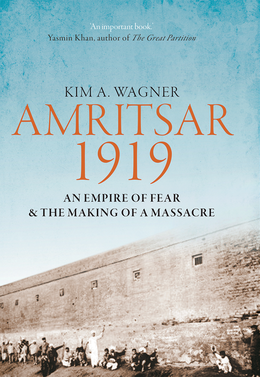
Amritsar 1919: An Empire of Fear and the Making of a Massacre (2019), is a book by Kim A. Wagner and published by Yale University Press, that aims to dispel myths surrounding the Jallianwala Bagh massacre that took place in Amritsar, India, on 13 April 1919.

The Patient Assassin, A True Tale of Massacre, Revenge and the Raj is a 2019 book based on the life of Indian revolutionary Udham Singh. Authored by Anita Anand, it was published by Simon & Schuster UK in April 2019 to coincide with the 100th anniversary of the Jallianwalla Bagh Massacre in Amritsar, India.
Vishwa Nath Datta was a distinguished Indian writer, historian and professor emeritus at Kurukshetra University.





















